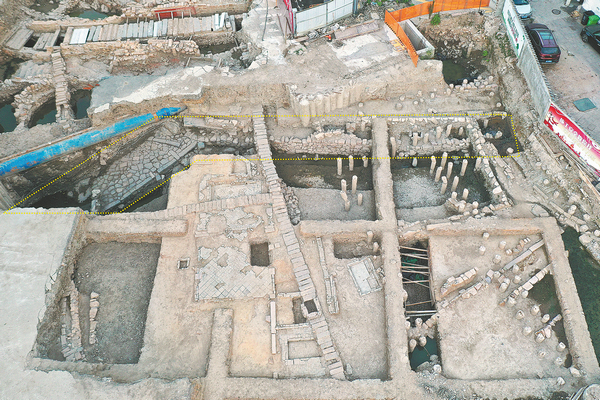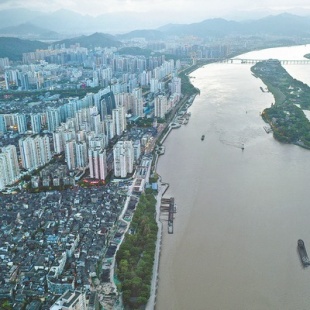Ancient port reveals its secrets


Place of poets
Wenzhou once had intersecting waterways like Venice, and boats were the primary means of transportation. It was built in 323 during the Eastern Jin Dynasty (317-420), of which the layout was said designed by the geomancer Guo Pu (276-324).
The city had several city and water gates. According to Wu Xianjun, a researcher with the Wenzhou Institute of Cultural Relics and Archaeology, the water gate site currently being excavated is roughly where one was located to the northeast of the city.
It was used to control the flow of water through the city, and locks to do just that have been found, but the gate itself still has not been discovered. Archaeologists have unearthed a sloping wharf, which would allow for the use of carts to transport goods, according to Wu.
The wengcheng area in the west, on the other hand, was the location of one of the city gates, known as the Shuomen Gate.
Remains of two wengcheng built in different periods of time have been found in the area. The earlier one, dating to the Song and Yuan dynasties, was shaped like an arc. Wu says it stood more than 9 meters when being built.
The later one, dating from the Ming (1368-1644) and Qing (1644-1911) dynasties, was rectangular.
On the Shuomen Gate, a towering building was added for a panoramic view of the river bank.
Wu says the building used to be visited by Xie Lingyun, a poet and government official from the Southern and Northern Dynasties (420-581) for a break between duties.
Famous for his landscape poetry, Xie wrote many such poems while he was stationed in Wenzhou, adding to the area's cultural prestige, says Wu.
He adds that in commemoration, people named the building after the poet, calling it the Xiegong Building. Neither the gate nor the building exists today, but a photo taken in 1877 shows how the structure once looked.
The river port site extends for 340 meters from east to west, and has docks of various kinds and sizes, stilt houses, wells and shipwrecks, and it forms the most complete ancient port from the Song and Yuan periods unearthed to date, says Liang Yanhua, director of the Wenzhou Institute of Cultural Relics and Archaeology.
Historical literature records that to the north of the Shuomen Gate there was a Zhenjiang Pavilion, and beside the pavilion, there were courier stations for receiving officials or foreign envoys. Excavations have unearthed the remains of wooden trestles, which are believed to have been connected to the pavilion in the past, and so some of the stilt houses found nearby may have been used as courier stations, says Liang.
Wu says that according to the records, low-ranking officials, who were responsible for receiving guests, lived such busy lives that they could barely find time to rest.





































